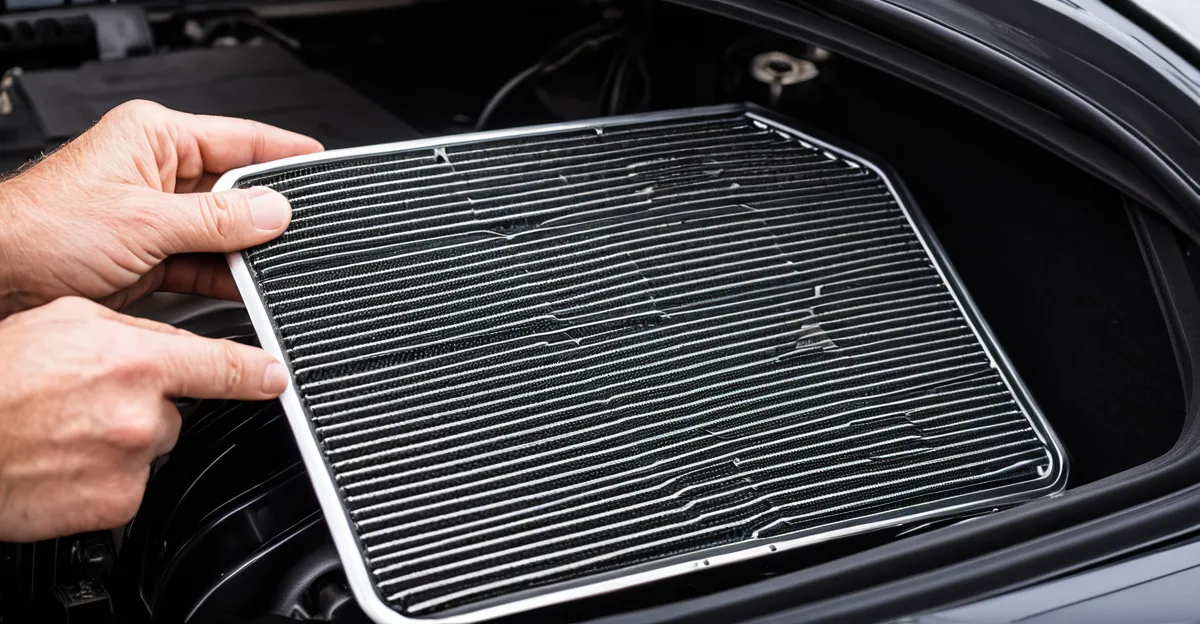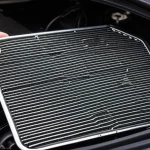Essential benefits of installing heat shields in vehicles
Installing heat shields in vehicles offers crucial heat shield benefits, primarily by preventing vehicle overheating. These shields act as barriers that deflect and dissipate excessive heat generated by the engine and exhaust systems. Effective temperature control helps maintain optimal operating conditions, which is essential for enhancing engine performance and longevity. Without heat shields, components may overheat, leading to reduced efficiency and premature wear.
Moreover, protecting sensitive parts from high temperatures prevents heat-related system failures such as warped components, fluid breakdown, and electrical malfunctions. This increased reliability reduces costly repairs and downtime, making heat shields a valuable investment in vehicle maintenance.
Also to see : Optimize your car’s electronic brake system: expert advice on achieving perfect brake force with new brake pads
In addition to mechanical protection, heat shields play a vital role in improving cabin comfort and safety. By limiting heat transfer, they reduce interior temperatures, allowing for a cooler and more pleasant driving experience. This temperature control also safeguards passengers from potential burns and helps maintain the effectiveness of climate control systems.
Overall, heat shields contribute to vehicle durability, efficiency, and occupant well-being by managing heat effectively.
Also to discover : Ultimate 4wd guide: transform your mountain adventures with expert differential fluid changes
Choosing the right heat shield: types and selection guide
Selecting the appropriate types of heat shields depends heavily on the application and the material properties. Common heat shield materials include aluminium, steel, and composites. Aluminium is lightweight and offers good heat reflection but has moderate durability. Steel provides excellent heat resistance and durability but adds weight, making it suitable for high-temperature areas like exhausts. Composite materials combine lightweight features with effective insulation, often used in engine bays or interiors where weight savings and heat protection are both critical.
When selecting heat shields, consider the location: engine bay shields must withstand intense heat and frequent exposure to fluids, while interior shields prioritize protecting cabin components with minimal bulk. Fit is crucial—an ill-fitting shield will compromise performance and durability. Durability varies; steel withstands harsh environments longer but may corrode, whereas aluminium resists corrosion but may fatigue.
Budget also influences choices. Aluminium shields tend to be less expensive but might need replacement sooner. Composite shields balance cost and performance but can be pricier. Understanding these factors ensures the most efficient and long-lasting protection for your vehicle’s heat management needs.
Tools and safety precautions for successful installation
Successful heat shield installation hinges on using the right tools and adhering to vehicle safety practices. Essential tools typically include a socket wrench set, screwdrivers, pliers, and sometimes a drill with metal bits. These allow precise fastening and secure mounting of the heat shield components.
When tackling a DIY heat shield installation, personal protective equipment (PPE) is crucial. Gloves protect against sharp edges, while safety goggles shield your eyes from debris and sparks. Wearing long sleeves and closed shoes further reduces injury risks during metal handling.
Before beginning, preparing your vehicle is equally important. Make sure the engine is cool to avoid burns. Secure the vehicle on a flat surface and engage the parking brake for stability. Disconnecting the battery ensures safety against electric shocks when working near electrical components.
Following these precautions not only safeguards your well-being but also optimizes the installation process. Taking time to gather proper tools and prepare your workspace sets the foundation for a safe and efficient heat shield replacement, ultimately enhancing vehicle safety and performance.
Step-by-step guide to installing heat shields
Installing heat shields can seem daunting, but following a clear, step-by-step installation process simplifies the task. First, begin by removing any old or damaged heat shields. This step ensures a clean surface for the new heat shield and helps prevent issues like rust or misalignment. Use appropriate tools to carefully detach clamps or bolts holding the previous shield.
Next, position the new heat shield correctly. Accurate heat shield installation means aligning the shield where it will offer optimal protection against heat exposure. This often involves holding the shield in place temporarily to check fitment before final attachment.
When securing the heat shield, consider common attachment techniques. Clamps provide a versatile and removable option, bolts offer strong and permanent fastening, while adhesives are useful for areas where mechanical fastening is impractical. Choosing the right method depends on the shield’s material and the vehicle’s design. Carefully applying these methods ensures a durable, effective barrier.
With these clear steps for DIY installation, anyone can confidently handle their heat shield installation and enhance their vehicle’s safety and performance.
Troubleshooting and optimizing performance
When it comes to heat shield troubleshooting, the first step is to identify common installation issues. Incorrect mounting can lead to poor heat shield performance, such as excessive heat transfer or rattling sounds. Check for loose bolts, gaps between the shield and heat source, or cracked materials, all of which are typical signs of improper installation or shield failure.
To maximize cooling efficiency, ensure the heat shield is correctly positioned to deflect radiant heat away from sensitive components. Using thermal paste or high-temperature adhesives can improve contact points, enhancing performance. Regularly inspect the shield for deformation or corrosion, as these reduce its effectiveness and can lead to overheating.
A practical tip is to verify that airflow around the heat shield is unobstructed. Blocked airflow traps heat, undermining the shield’s function. Finally, periodically clean the heat shield to remove dust or grease buildup, which diminishes its insulating properties. Through diligent heat shield troubleshooting and maintenance, you can significantly increase both safety and performance.
Maintenance, care, and cost considerations
Maintaining a heat shield involves regular inspection to detect any signs of wear or damage early. Focus on checking for cracks, corrosion, or loose fittings, as these can compromise performance. Heat shield maintenance should be scheduled periodically to ensure the component functions optimally, protecting other parts and enhancing safety.
Cleaning is a vital aspect of heat shield upkeep. Use mild detergents and non-abrasive tools to remove dirt and debris without damaging the surface. Minor repairs, such as tightening fasteners or applying protective coatings, can prolong the shield’s lifespan and prevent costly replacements.
Considering the cost of heat shields, investing in routine maintenance and care often results in significant long-term savings. Replacing a damaged heat shield can be expensive and may lead to further repair costs if underlying components are affected. A cost-benefit analysis typically favors consistent upkeep, which helps avoid unexpected expenses and supports sustained vehicle performance.
Real-world results: effectiveness and user experiences
Experience shows that heat shields significantly contribute to vehicle cooling results by reducing engine bay temperatures. Many users in heat shield testimonials report noticeable drops in under-hood heat, often by several degrees Celsius. These improvements clearly help mitigate vehicle overheating, especially in high-performance and older cars prone to heat buildup.
Vehicle owners consistently praise the product’s ability to maintain a cooler engine compartment, which translates to better performance and longevity. User reviews often highlight increased comfort, with reduced heat transfer to the cabin, making drives more enjoyable in warm climates.
Experienced installers advise paying close attention to proper placement and secure mounting, as this boosts heat shield efficiency and durability. From their lessons learned, avoiding direct metal-to-metal contact and ensuring adequate clearance can prevent premature wear and maximize cooling benefits.
Overall, these real-world findings and personal insights illustrate how heat shield solutions deliver practical benefits, improved safety, and enhanced user satisfaction. For those considering a heat shield, reviews and testimonials provide actionable guidance tailored to everyday vehicle use.



